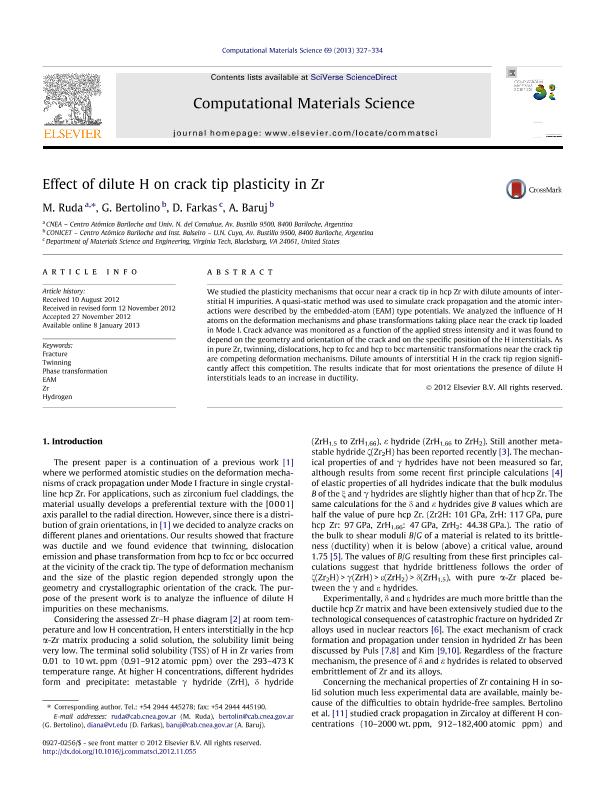Artículo
Effect of dilute H on crack tip plasticity in Zr
Fecha de publicación:
03/2013
Editorial:
Elsevier Science
Revista:
Computational Materials Science
ISSN:
0927-0256
Idioma:
Inglés
Tipo de recurso:
Artículo publicado
Clasificación temática:
Resumen
We studied the plasticity mechanisms that occur near a crack tip in hcp Zr with dilute amounts of interstitial H impurities. A quasi-static method was used to simulate crack propagation and the atomic interactions were described by the embedded-atom (EAM) type potentials. We analyzed the influence of H atoms on the deformation mechanisms and phase transformations taking place near the crack tip loaded in Mode I. Crack advance was monitored as a function of the applied stress intensity and it was found to depend on the geometry and orientation of the crack and on the specific position of the H interstitials. As in pure Zr, twinning, dislocations, hcp to fcc and hcp to bcc martensitic transformations near the crack tip are competing deformation mechanisms. Dilute amounts of interstitial H in the crack tip region significantly affect this competition. The results indicate that for most orientations the presence of dilute H interstitials leads to an increase in ductility.
Palabras clave:
EAM
,
FRACTURE
,
HYDROGEN
,
PHASE TRANSFORMATION
,
TWINNING
,
ZR
Archivos asociados
Licencia
Identificadores
Colecciones
Articulos(CCT - PATAGONIA NORTE)
Articulos de CTRO.CIENTIFICO TECNOL.CONICET - PATAGONIA NORTE
Articulos de CTRO.CIENTIFICO TECNOL.CONICET - PATAGONIA NORTE
Citación
Ruda, Margarita María; Bertolino, Graciela Mabel; Farkas, D.; Baruj, Alberto Leonardo; Effect of dilute H on crack tip plasticity in Zr; Elsevier Science; Computational Materials Science; 69; 3-2013; 327-334
Compartir
Altmétricas




